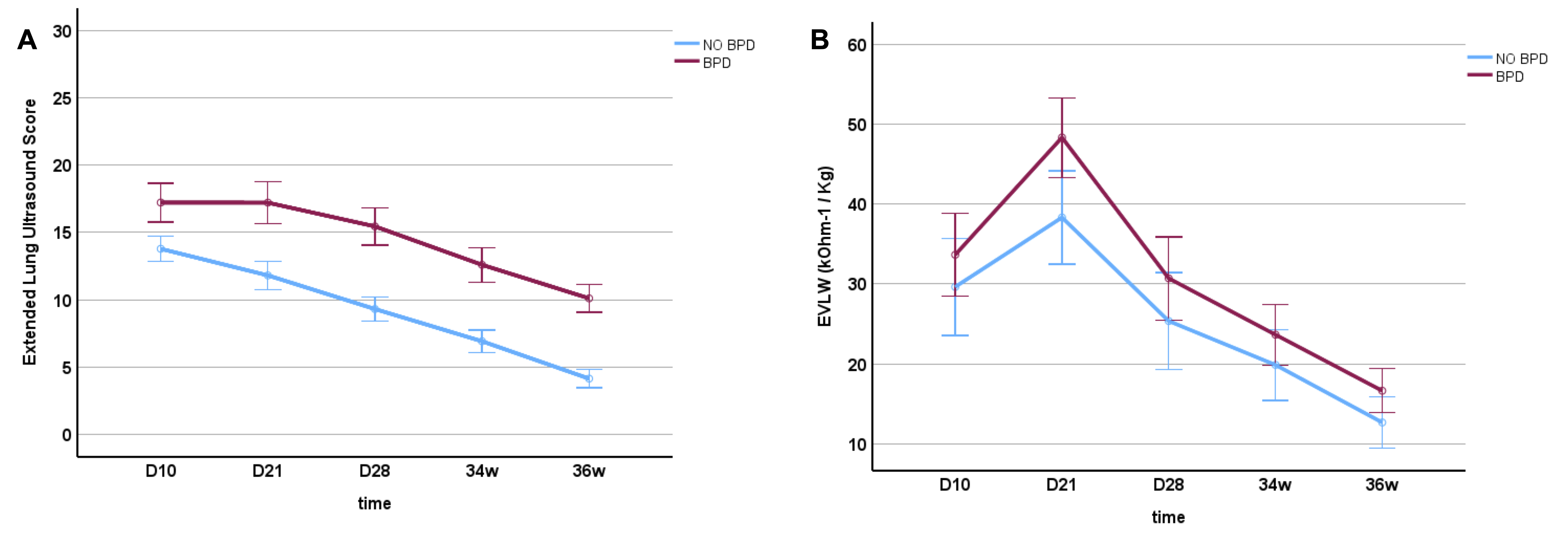Neonatal Pulmonology - Basic/Translational Science 3
Session: Neonatal Pulmonology - Basic/Translational Science 3
321 - Lung aeration and extra-vascular lung water in extremely preterm infants with or without evolving bronchopulmonary dysplasia
Monday, April 28, 2025
7:00am - 9:15am HST
Publication Number: 321.5911
Diletta Martino, University of Padova: Department of Women' and Children Health, Padova, Veneto, Italy; Barbara Loi, Antoine Beclere Medical Center - Paris Saclay University Hospitals, Paris, Ile-de-France, France; Costanza R. Neri, APHP Paris-Saclay University, Paris, Ile-de-France, France; Eugenio Baraldi, university of Padova, Italy, padova, Veneto, Italy; Daniele De Luca, APHP - Paris Saclay University, Paris, Ile-de-France, France

Daniele De Luca, n/a (he/him/his)
Full Professor of Neonatology
APHP Paris Saclay University
Paris, Ile-de-France, United States
Presenting Author(s)
Background: Bronchopulmonary dysplasia (BPD) may have different pathophysiological phenotypes although the clinical appearance (i.e. oxygen dependency) is shared. Quantitative lung ultrasound accurately monitors lung aeration in evolving BPD.[1] but it is unclear if lung aeration is decreased because of accumulating Extra Vascular Lung Water (EVLW).
Objective: We aimed to study lung aeration and EVLW in preterm infants developing or not BPD.
Design/Methods: Partial data from a prospective international multicenter observational cohort study, which longitudinally studied extremely preterm infants (GA < 30w). Extended LUS (eLUS,[1]) and EVLW (estimated with electrical cardiometry [2]) were simultaneously assessed on days 10, 21, and 28 of life, and at 34 and 36 weeks of postmenstrual age.
Results: eLUS significantly differed between infants who developed BPD (n=23) and those who did not (n=52) across all time points (between-subjects effect, p=0.002) and showed a decrease over time (within-subjects effect, p< 0.001), with a significant interaction between time and BPD diagnosis (p=0.024). Weight-indexed EVLW changed over time (within-subjects effect, p=0.017) and was statistically different between the groups at each time point (between-subjects effect, p=0.030) but the difference is much smaller in absolute values and there was no interaction (p=0.477-Fig.1A-B). There was no correlation between eLUS and EVLW at any timepoint. Multivariate logistic regression (adj-R2=0.75) confirmed BPD to be more strongly associated with eLUS (OR: 1.5 (95%CI: 1.2-2), p=0.002) than with EVLW (OR: 1.1 (95%CI: 1.02-1.3),p=0.022).
Conclusion(s): Lung aeration is always worse during the first 36w of postmenstrual age in infants developing than in those not developing BPD. The role of EVLW is less important as its increment in BPD patients is small and its decrement overtime is not different between patients with or without BPD.
References:
1. Loi B. Am J Resp Crit Care Med 2021
2. Boet A. J Perinatol 2016
Figure 1. Lung aeration and extra-vascular lung water (EVLW) in extremely preterm infants developing or not BPD.
 Points and T-bars represent mean and standard deviations, respectively. Red and blue lines represent infants diagnosed with BPD or not, respectively. Abbreviations: BPD: bronchopulmonary dysplasia; D: day; EVLW: extra-vascular lung water
Points and T-bars represent mean and standard deviations, respectively. Red and blue lines represent infants diagnosed with BPD or not, respectively. Abbreviations: BPD: bronchopulmonary dysplasia; D: day; EVLW: extra-vascular lung water 
